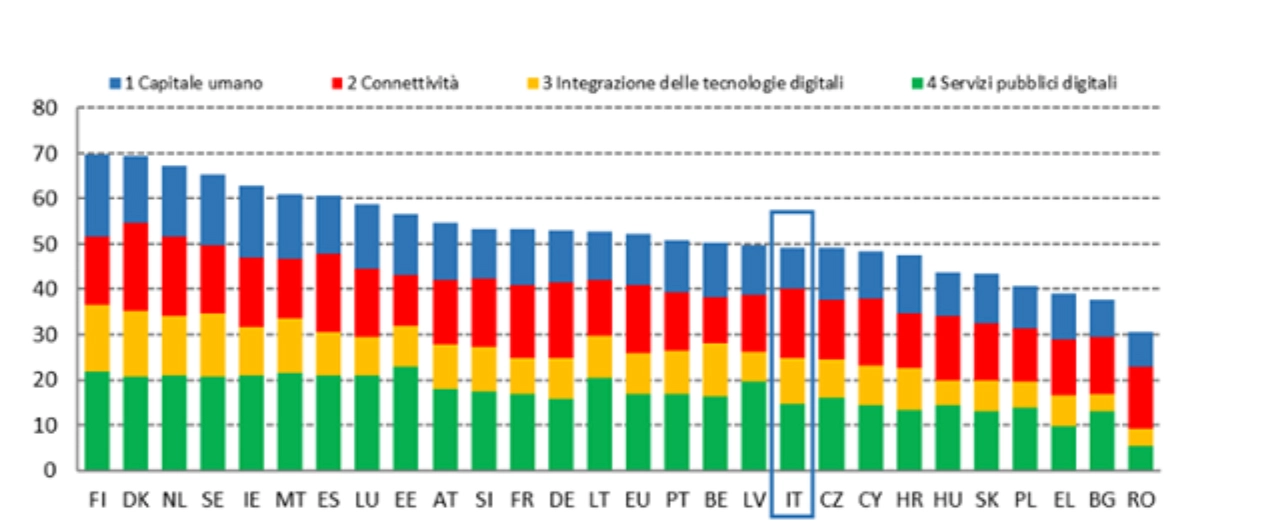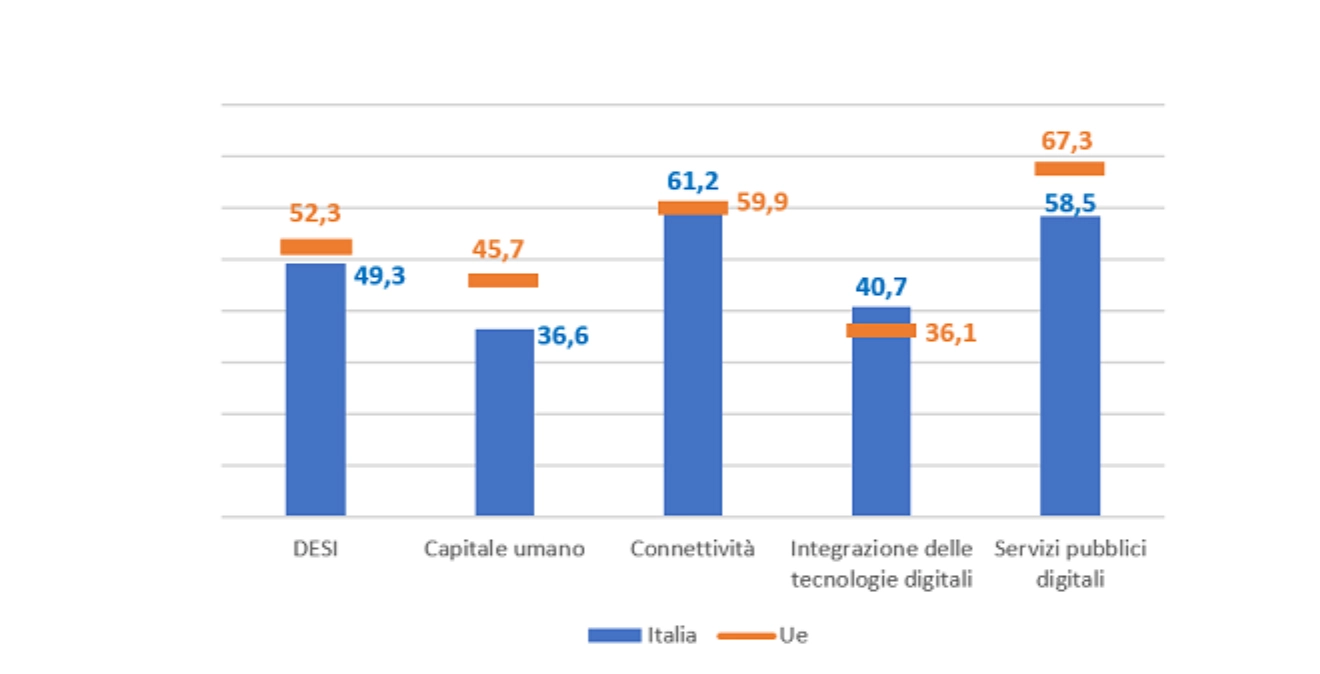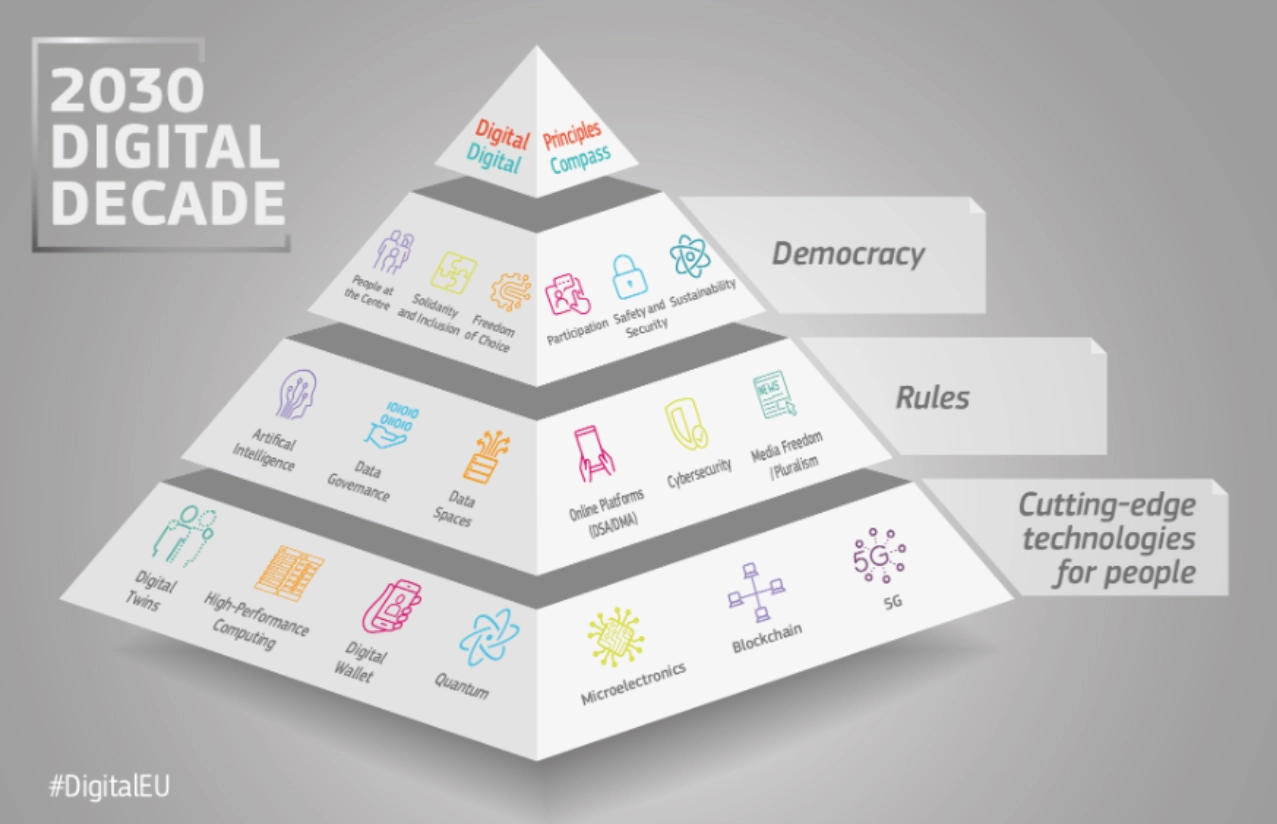Italy shows significant progress in digitization according to the European Commission's DESI 2022 Report, but still ranks 18th out of 27 EU member states.
Over the past five years, Italy's DESI score has increased from 28.2 to 49.3, representing the most consistent progress among all EU countries. However, Italy's score remains below the European average of 52.3 and countries such as Spain, France and Germany.
Economy and Society Digitization Index (Resi) - Ranking 2022
taly shows good performance in connectivity, with major improvements in 5G coverage and fast broadband. However, it still has some weaknesses in the use of big data, artificial intelligence and e-commerce adoption. In addition, the country ranks below the European average in terms of human capital and digital public services.
DESI 2022 - Score relative to each dimension


